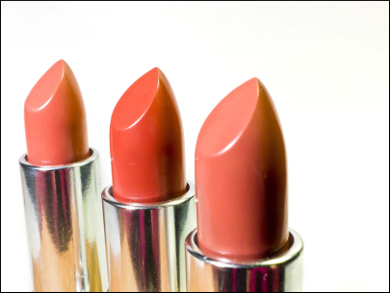By some estimates, a woman may ingest about 1.8 kg of lipstick over the course of a lifetime, along with the lead-based coloring agents these products contain. To see how much this adds up to, Hong-Bo Li, Lena Q. Ma, Nanjing University, China, and colleagues measured lead quantities and bioavailabilities in 75 lipsticks and 18 lip glosses, as well as the concentrations of six other metals (Co, Cd, As, Ni, Cr, Zn).
Lead concentrations ranged from 0.2 to 10,185 mg/kg and averaged 497 mg/kg. These values were significantly higher than those for any of the other metals. Orange and pink shades contained more lead (presumably as PbCrO4) than brown, red, or purple ones. More expensive products contained less lead, and European and American products contained less lead than Iranian and Saudi products, which in some cases contained several grams of lead per kg product.
The team estimated a daily lead intake between 0.04 and 1.5 μg/kg body weight from lipstick or lip gloss when bioavailability was taken into account. For some products, lip product users with a particularly high rate of ingestion (highest 5 %) could take up amounts of 5.31 μg lead/kg body weight daily, which exceeds the provisional tolerable daily intake level of 3.5 μg/kg body weight.
The researchers suggest that lead speciation studies should be performed to assess the effects of various lead compounds on bioavailability, especially for five of the tested products that had unusually large bioavailability results. They also recommend similar studies on chromium concentrations and bioavailability.
- Lead Relative Bioavailability in Lip Products and Their Potential Health Risk to Women,
Di Zhao, Jie Li, Chao Li, Albert L. Juhasz, Kirk G. Scheckel, Jun Luo, Hong-Bo Li, Lena Q. Ma,
Environ. Sci. Technol. 2016.
DOI: 10.1021/acs.est.6b01425




